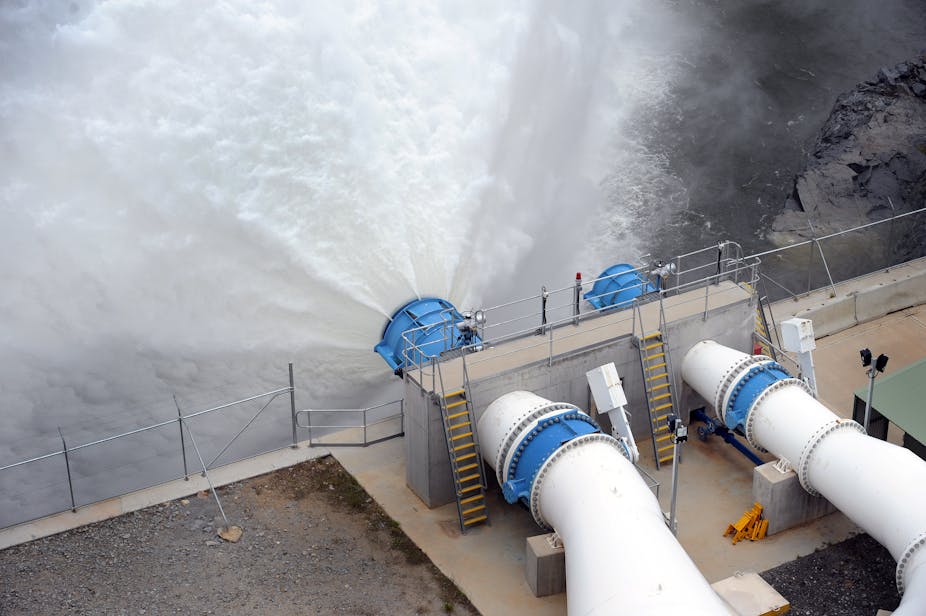The National Water Commission released its Third Biennial Assessment of the 2004 National Water Initiative (NWI) in September.
The NWI is an agreement between all state and territory governments and federal government to improve the management of water in Australia. The 2004 NWI built on a long history of water reforms since federation.
In page five of its report, the Commission identifies further unfinished business in national water reform:
“The deadlines set out in its implementation schedule have largely passed and were perhaps unrealistic when the NWI was signed. Many important actions are not complete.”
The Commission’s report highlights key lessons learnt in the past seven years of water reform.
Water can’t be managed based only on historical climate averages
Since the NWI was signed in 2004, Australia has faced extreme climatic conditions, both wet and dry.
According to Chris Milly and co-authors in a 2008 article in the journal Science, “stationarity is dead”.
In other words, we can no longer assume that climatic conditions will stay within a limited range of variability, drawn from historical records. This is a result of increased climate variability in a climate-changing world.
In the past, the NWI recommended urban water planning based around water efficiency, demand management and pricing. But the effects of long-term drought forced rapid responses to water supply dilemmas. This has included building desalination facilities in most capitals.
The Commission recommends developing a more resilient and flexible urban water sector. We need more transparent decision-making that takes into account the extremes of climate variability.
Communicate the benefits of water reform
Referring to the aftermath of the 2010 Guide to the Proposed Basin Plan, the Commission emphasises the need for improved community engagement. This would promote a shared understanding of the benefits of water reform.
In part, the confusing institutional complexity of the water managing system was identified as an issue. The report said:
“Some stakeholders have told us that they have been confused and frustrated by the wide range of organisations responsible for different aspects of the water reform agenda.”
In launching the Third Biennial Assessment, Commission Chair Chloe Munroe acknowledged it is “a complexity born of history but also born of the nature of the resource itself.”
So it’s unlikely we can do away with complexity. But recent research has shown that it need not be a barrier to effective governance. Water professionals can learn to deal with and manage complexity if it is part of their professional development and induction.
Connected resources need to be managed together
The Commission’s report demonstrates an important shift in thinking about water governance. It moves from governance as a subject-driven pursuit (for example, water markets) to seeing broader connected systems.
“The Commission believes there are significant benefits to be gained from more effective coordination of water management with related areas of policy. Equally, there are also real risks from a failure to coordinate.”
Water planning and catchment management are obviously aligned at the regional level. The Commission also connects the roles of water service providers and urban planning. This is vital for an agenda that includes “water sensitive cities”.
The Commission recommends reviewing regulation of mining and coal-seam gas water resources. They also recognise that climate change adaptation and mitigation are interconnected with water and energy governance. It is important to get policies aligned at the energy-water-carbon nexus.
Where to now?
The NWI has shown that aligning regulatory frameworks can achieve a lot in a highly fragmented and historically politicised area of governance. The unfinished business of water reform now falls either in the “haven’t got around to it yet” basket or the “too-hard” basket.
To deal with the items still remaining in the “too hard” basket, we need a new approach to water governance. More “joined up” models of policy development, such as social learning, have great potential.
The Commission’s biennial assessments have reviewed progress towards delivering the NWI. The National Water Commission itself is currently under external review, due to be completed by the end of the year.
The NWI has launched Australian governments into the turbulent waters of reform, and if they don’t want to sink, they need to keep swimming.

